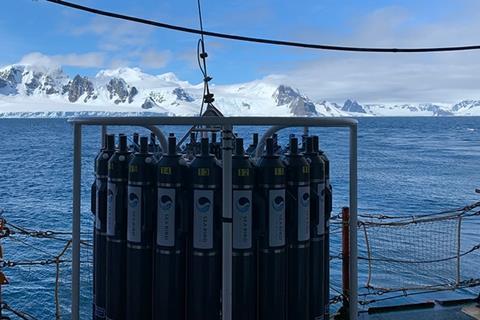A team of international researchers led by Federico Baltar of the University of Vienna and José M González of the University of La Laguna has identified a previously unknown group of bacteria, called UBA868, as key players in the energy cycle of the deep ocean.

They are significantly involved in the biogeochemical cycle in the marine layer between 200 and 1000 metres. The results have now been published in the journal Nature Microbiology.
The deep sea, the marine layer at depths of 200 metres and more, accounts for about 90 percent of the world’s ocean volume. It forms the largest habitat on Earth and is home to the largest number of microorganisms.
These microorganisms contribute significantly to the biogeochemical cycles. They extract organic material, for example from phytoplankton and zooplankton, transform it and make it available again to the ecosystem as nutrients. In this way, they play a major role in the fixation and cycling of carbon. Dissolved sulfur compounds are also converted by bacteria and returned to the material cycle.
Driving force
UBA868 plays a significant role in the oxidation of sulphur compounds and the fixation of carbon dioxide, thus contributing significantly to the energy balance in the deep sea.
“Interestingly, UBA868 is mixotrophic. This means that it can both fix carbon from CO2 using the energy generated by oxidizing sulphur compounds and take up organic substances and use them for energy production” explains Federico Baltar.
This finding refutes the previously held assumption that only autotrophic microorganisms (that can use CO2 as a carbon source) and heterotrophic microorganisms (that rely on organic carbon sources) are responsible for regulating the carbon cycle.
To investigate the role of UBA868 in the ocean, the team used a combination of genomic analysis methods, including single-cell genomics, community metagenomics, metatranscriptomics and single-cell activity measurements.
Finally, analysis of gene libraries from multiple, worldwide expeditions confirmed the ubiquitous distribution and global importance of this bacterial group. This discovery contributes to our understanding of marine ecosystems and the ocean’s ability to store carbon. At the same time, it shows how important it is to also put mixotrophic bacteria in the focus of research on the cycling of nutrients in the ocean.







No comments yet